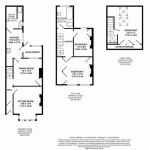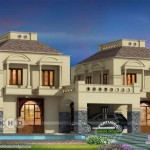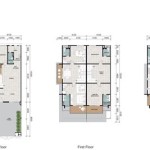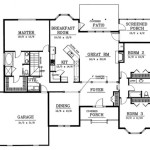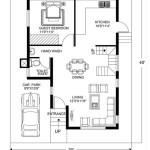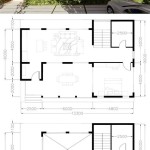Plan and Elevation: Understanding Kerala Style House Design
Kerala style houses, characterized by their distinctive architectural elements and emphasis on natural materials, hold a significant place in the residential landscape of South India. The design principles are deeply rooted in Vaastu Shastra and traditional craftsmanship, resulting in structures that are both aesthetically pleasing and functionally efficient. Understanding the plan and elevation of a Kerala style house is crucial for appreciating its unique features and adapting its principles to contemporary construction.
This article delves into the specifics of plan and elevation considerations within the context of Kerala style house design. It examines the key elements that define the style, the significance of spatial organization, and the visual characteristics that distinguish these homes.
The enduring appeal of Kerala style houses lies in their ability to seamlessly blend with the natural environment, offering a harmonious living experience that respects tradition while embracing modern comforts. From the sloped roofs to the intricate woodwork, every detail contributes to the overall character and functionality of these homes.
Key Elements Influencing the Plan of a Kerala Style House
The plan of a Kerala style house is significantly influenced by several key elements, including Vaastu Shastra principles, the availability of local materials, and the climatic conditions of the region. These factors collectively shape the spatial organization and layout of the house, ensuring optimal functionality and comfort for the occupants.
Vaastu Shastra, the ancient Indian science of architecture, plays a central role in determining the orientation, placement of rooms, and overall layout of the house. The cardinal directions are carefully considered, with the east-facing entrance being the most preferred due to its association with positive energy and sunlight.
The central courtyard, or *nadumuttam*, is a defining feature of traditional Kerala houses. It serves as a focal point for the house, providing natural light and ventilation while also acting as a gathering space for the family. The courtyard is often adorned with plants and serves as a connection to nature.
Rooms are typically arranged around the courtyard, with careful consideration given to their function and placement. The kitchen, for example, is often located in the southeast corner, while the prayer room is usually situated in the northeast. Bedrooms are typically placed on the western side of the house to provide respite from the afternoon sun.
The availability of local materials also plays a significant role in shaping the plan of the house. Laterite stone, timber, and clay tiles are commonly used in construction, influencing the dimensions and structural design of the building. The use of these materials not only reflects the regional availability but also contributes to the thermal properties of the house.
Climatic conditions, characterized by heavy rainfall and high humidity, are also factored into the plan. Sloped roofs, with their characteristic overhanging eaves, are designed to effectively drain rainwater and protect the walls from erosion. Wide verandahs, or *padippura*, provide shaded outdoor spaces and help to regulate the temperature inside the house.
The integration of these elements results in a plan that is both functional and aesthetically pleasing, creating a living space that is well-suited to the regional environment and cultural traditions.
Essential Aspects of Elevation in Kerala Style Architecture
The elevation of a Kerala style house, the external view of the structure, is characterized by a distinct set of architectural elements that contribute to its visual appeal and functional performance. These elements include the sloped roof, the use of traditional materials, the design of the verandah, and the presence of intricate woodwork.
The sloped roof, often clad with clay tiles, is perhaps the most recognizable feature of Kerala style architecture. The steep slope allows for efficient rainwater runoff, preventing water damage and ensuring the longevity of the structure. The overhanging eaves provide shade and protection from the elements, further enhancing the building's durability.
The use of traditional materials, such as laterite stone and timber, is also a defining characteristic of the elevation. Laterite stone, with its reddish-brown hue, is commonly used for the foundation and walls, providing a strong and durable base for the house. Timber, sourced from local trees like teak and rosewood, is used for the roof structure, doors, windows, and other decorative elements.
The verandah, or *padippura*, is an integral part of the elevation, serving as a transition space between the interior and exterior. It is often adorned with intricately carved wooden pillars and railings, adding to the aesthetic appeal of the house. The verandah provides a shaded outdoor space for relaxation and socializing, while also helping to regulate the temperature inside the house.
Intricate woodwork, a hallmark of Kerala style architecture, is prominently featured in the elevation. Carved wooden panels, doors, and windows are adorned with traditional motifs and patterns, reflecting the rich cultural heritage of the region. The woodwork not only adds visual interest but also serves as a testament to the skill and craftsmanship of local artisans.
The combination of these elements results in an elevation that is both visually appealing and functional, creating a house that is well-suited to the regional climate and cultural context. The emphasis on natural materials and traditional craftsmanship lends a timeless quality to these homes, ensuring their enduring appeal.
Adapting Kerala Style Principles to Modern House Design
While rooted in tradition, the principles of Kerala style house design can be effectively adapted to modern construction, creating homes that offer both aesthetic appeal and functional efficiency. This adaptation involves retaining the core elements of the style while incorporating contemporary materials and technologies.
The central courtyard, a defining feature of traditional Kerala houses, can be incorporated into modern designs to provide natural light and ventilation. The courtyard can be adapted to suit the specific needs and preferences of the occupants, ranging from a small, intimate space to a larger, more elaborate garden.
The sloped roof, with its functional benefits and aesthetic appeal, can also be retained in modern designs. While traditional clay tiles can be used, contemporary roofing materials, such as metal sheets and concrete tiles, can also be employed to achieve a similar effect.
The use of natural materials, such as wood and stone, can be incorporated into the facade of the house to maintain the traditional aesthetic. Modern alternatives, such as engineered wood and prefabricated stone panels, can be used to reduce costs and construction time.
The verandah, a key element of the Kerala style elevation, can be adapted to suit modern lifestyles. It can be designed as a covered patio, a screened porch, or an open-air balcony, providing a versatile outdoor space for relaxation and entertainment.
The principles of Vaastu Shastra can also be applied to modern house design, ensuring that the orientation, layout, and placement of rooms are in harmony with the natural environment. This can involve aligning the house with the cardinal directions, optimizing the flow of energy, and creating a sense of balance and well-being.
By incorporating these elements, modern houses can be designed to emulate the aesthetic appeal and functional benefits of traditional Kerala style houses, creating homes that are both visually appealing and environmentally sustainable. The adaptation of these principles allows for the creation of homes that respect tradition while embracing modern comforts and technologies.
Ultimately, the combination of careful planning and thoughtful elevation design ensures that Kerala style houses, whether traditional or modern, continue to be admired for their beauty, functionality, and connection to the natural environment. The enduring appeal of these homes lies in their ability to create a harmonious living space that respects tradition while embracing the needs of contemporary lifestyles.

Contemporary House Plan Elevation In Kerala Style

House Plan And Elevation 2165 Sq Ft Kerala Home Design Floor 21

Fascinating Kerala Style Single Storied House Plan And Its Elevation Story Plans Pictures Floor

40 House Plan Front Design In Kerala Style 1600 Sq Ft 3 Bhk

Kerala Style Villa Elevation Design 2600 Sq Ft Home And Floor Plans 10k Dream Houses

Kerala Home Plan And Elevation 2811 Sq Ft Design 3f

Kerala Model Elevations Home Plans

Kerala Style Single Floor House Plan 1155 Sq Ft Home Design And Plans 10k Dream Houses

10 Traditional Kerala House Elevation Design Ideas In 2024

Contemporary Style Elevation Kerala Model Home Plans

